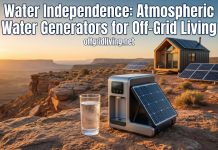Pickled foods have been popular for centuries. They offer a unique tangy, salty flavor that is irresistible to many palettes and can be kept in the pantry in jars or cans for an extended period of time with no worries about spoilage.
Whether you’re looking to keep your pickles handy all year round or you want to create something truly special out of seasonal harvests from your homestead, farm, or garden –having a well-stocked Pickler’s Pantry is an easy way to add mouthwatering goodness into your meals! In this post, we’ll explain why having some ready-made ‘pickles’ will come in handy and how anyone can put together their own customized Pickler’s Pantry full of handcrafted goodies.
The Basics of Pickling – What it is and How It’s Done
Pickling is one of the oldest methods of preserving food, dating back to ancient civilizations. It involves soaking vegetables or fruit in a mixture of vinegar, salt, and spices to create a tangy and flavorful snack.
The process of pickling involves sterilizing jars, slicing vegetables or fruit, creating a brine, and combining the two in the jar. Properly pickled foods can last for several months, making it an excellent way to extend the shelf life of seasonal produce.
While pickling may seem intimidating at first, it’s a straightforward process that anyone can learn. So why not try pickling your favorite vegetables and see what delicious creations you can come up with?
Tips for Choosing the Right Ingredients for Your Pickles
Pickling is a science and choosing the right ingredients can make or break your perfect jar of pickles. When selecting vegetables, ensure that they are fresh, firm, and unblemished. As the quality of your cucumbers and other produce plays a big part in the overall flavor and texture of your pickles.
In addition to your main ingredient, the types of herbs and spices you use can have a huge impact on the overall taste. For instance, dill is a popular choice for its unique flavor, while mustard seeds add an extra kick. When making pickles, salt and vinegar are crucial components, in determining the acidity and flavor of your finished product.
Remember that the right balance of ingredients is key to making your pickles stand out. Experiment with different combinations until you find your perfect recipe.
The Benefits of Home-Pickled Treats – Healthier, Tastier, and More Economical Than Store-Bought
If you’re looking for a new hobby or want to make healthier snack options for your family, home-pickling is a great choice. Not only do homemade pickles, relishes, and other treats taste better than store-bought versions, but they can also be much healthier.
With control over the ingredients used, you can avoid preservatives and high amounts of sodium commonly found in commercial products. Additionally, making your pickled snacks can save you money in the long run, as you won’t have to keep buying them from the store.
So, grab some jars, fresh produce, and vinegar, and start experimenting with different flavor combinations today!
Step-by-Step Guide to Making Your Own Pickles at Home
Making your pickles at home may seem daunting at first, but with a step-by-step guide to follow, you can create delicious pickles in no time.
Start by choosing your desired type of cucumber, whether it be Kirby, Persian, or English. Then, prepare the brine by combining vinegar, water, salt, and any additional spices or herbs you prefer. The cucumbers are then sliced and placed into a jar with garlic cloves and dill.
Finally, the brine is poured over the cucumbers and left to sit for a few days before enjoying your homemade pickles. Making your own pickles allows you to have full control over the flavor and ingredients, and is a rewarding and tasty project to take on.
How to Store Pickles Properly and Ensure Their Long Shelf Life
As pickle lovers, we all want to savor their tangy, crunchy goodness for as long as possible. To do that, it’s important to know how to store pickles properly.
First things first, always opt for airtight containers to keep your pickles fresh. Glass jars or plastic containers with tight-fitting lids work well. Secondly, store them in the fridge to slow down the fermentation process and prolong their shelf life.
Do not leave them out at room temperature as this will speed up the fermentation process, resulting in soft, mushy pickles.
Lastly, be sure to check for spoilage regularly by inspecting the appearance, texture, and smell of your pickles. By following these simple storage guidelines, you can keep your pickles crisp and delicious for weeks to come.
A Look at Some Delicious Recipes Using Pickled Ingredients
Pickled vegetables and fruits are versatile ingredients that can add a delicious tangy flavor to any dish. Toss some pickled beets into a salad for a colorful and flavorful addition or add pickled onions to tacos or sandwiches for an extra zing.
For a unique and tasty appetizer, try making pickled deviled eggs by mixing chopped pickles into the yolk mixture. Pickled ginger can also be used to add flavor to sushi rolls or served on the side as a palate cleanser between bites. Whether you’re a fan of classic pickles or curious about using pickled ingredients in new ways, there’s no shortage of tasty recipes to explore.
Whether you’re wanting some fresh, crunchy pickles to go in your lunch, looking for a healthier alternative to store-bought snacks, or want to try out one of the many tasty recipes that can be made using delicious pickled ingredients, pickling is an easy and fun kitchen activity. Not only is it healthier than most store-bought versions, but with so many flavor combinations and varieties to choose from you’re sure to find something you love! With just a little bit of guidance and practice, you’ll soon be creating delicious homemade pickles that your family and friends will love. So why not take the plunge and discover the joy of homemade pickling today? You won’t regret it.














